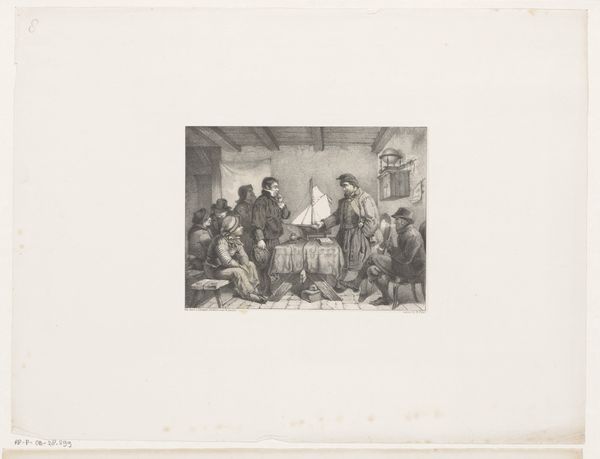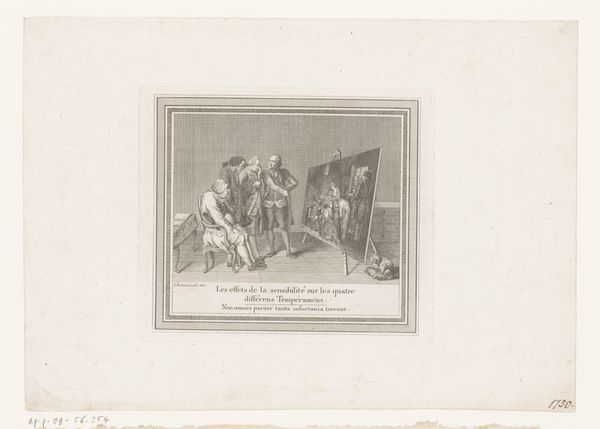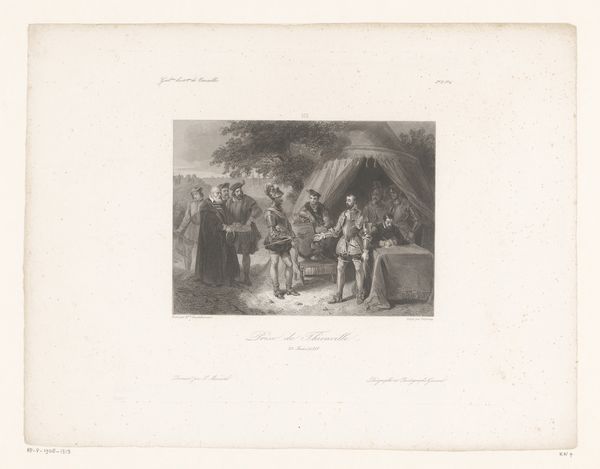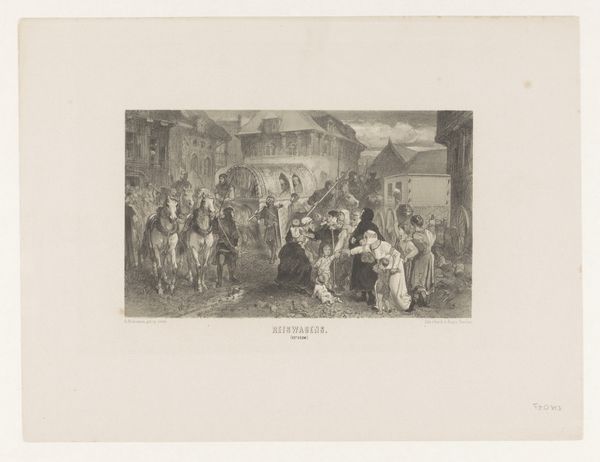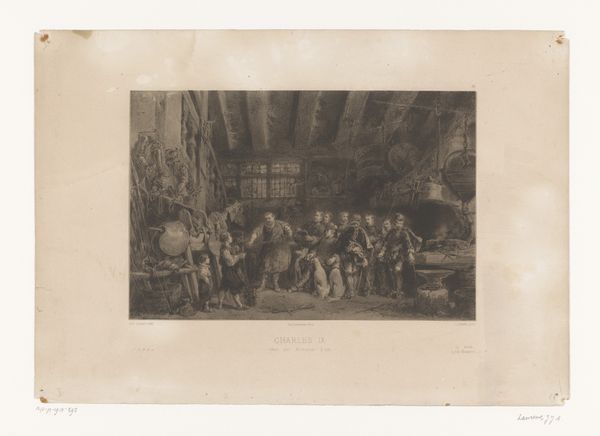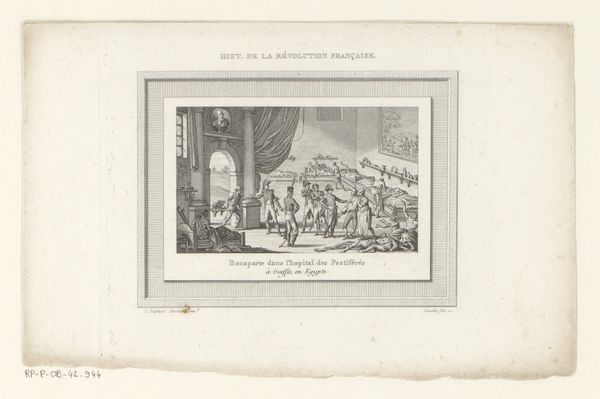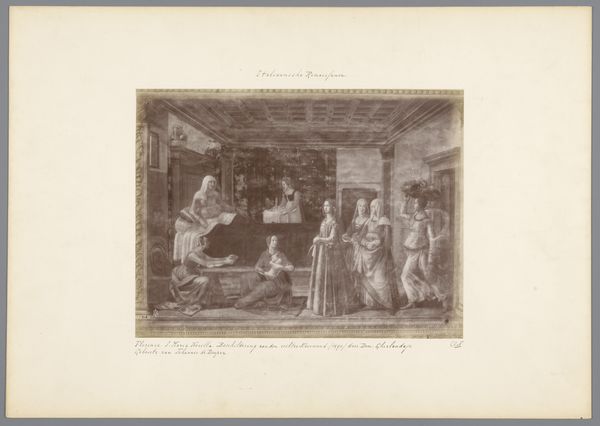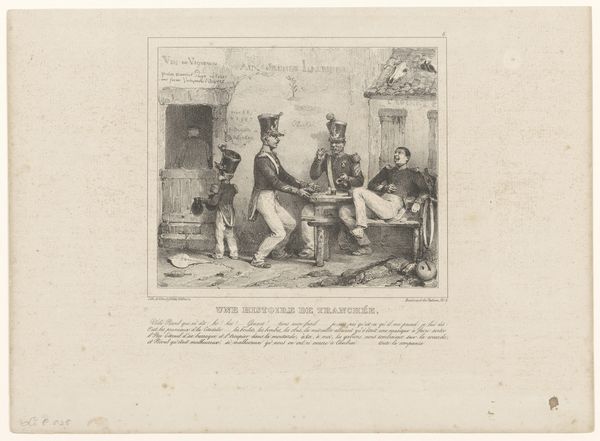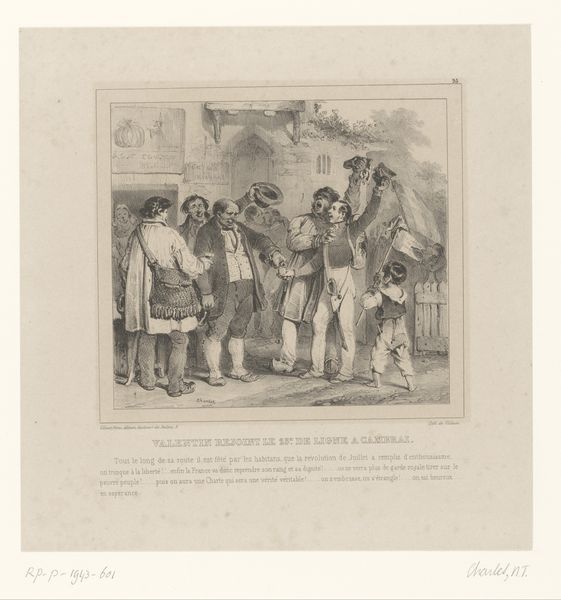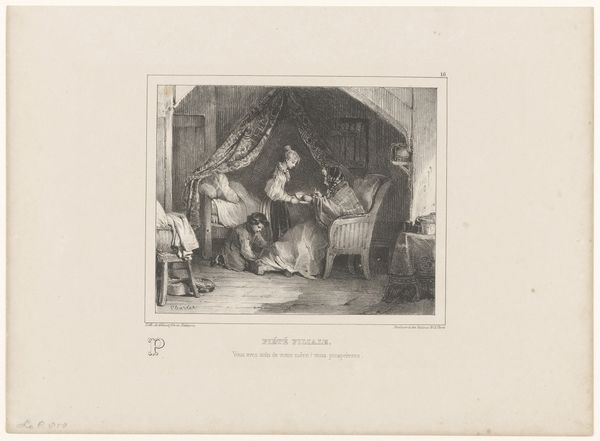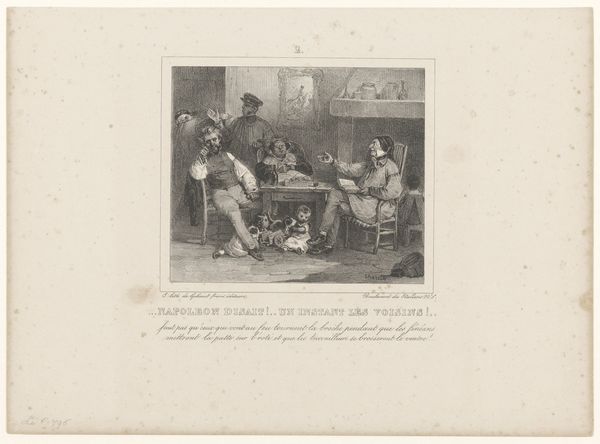
Gezelschap in een interieur met persoon in vermomming c. 1837s - 1847s
0:00
0:00
pauluslauters
Rijksmuseum
print, engraving
#
portrait
# print
#
figuration
#
genre-painting
#
history-painting
#
engraving
Dimensions: height 245 mm, width 330 mm
Copyright: Rijks Museum: Open Domain
Editor: Here we have Paulus Lauters' "Company in an Interior with a Person in Disguise," an engraving dating from around 1837 to 1847, on display at the Rijksmuseum. It feels very theatrical to me, with everyone in costume. What draws your eye in this piece? Curator: My attention is caught by the layering of symbolism. Look at how clothing functions as a signifier, but also how that meaning is intentionally disrupted. The person “in disguise” – what is he masking and why? Costumes aren't simply superficial coverings; they encode social roles, historical periods, aspirations. How does this conscious masquerade reflect or challenge societal norms of the time? Editor: So you're seeing the costumes as almost like characters in themselves? Do you think it speaks to something about identity and performance? Curator: Precisely. Every carefully chosen detail, from the cut of a garment to the accessories worn, broadcasts information. Consider also how these visual elements interact with gestures, postures, the very layout of the scene. Do these interactions confirm or subvert what is being outwardly presented? Is there a tension there? Editor: Now that you mention it, the man sitting alone looks rather contemplative, as if removed from the activity, the performance. Curator: Exactly! How does his solitary state affect the narrative we construct? The clothing certainly dictates one reading. What counter-narrative could his presence be suggesting about that collective identity, that supposed solidarity? What has changed for you as we explored these symbols and their tensions? Editor: It makes me want to research more about the societal expectations present at the time of the painting's creation and to maybe challenge what is right there on the surface! Curator: Indeed! Symbols often outlive their original intent. This can challenge how the original meanings get transferred across generations, evolving from fixed concepts into open fields for constant reimagining.
Comments
No comments
Be the first to comment and join the conversation on the ultimate creative platform.

